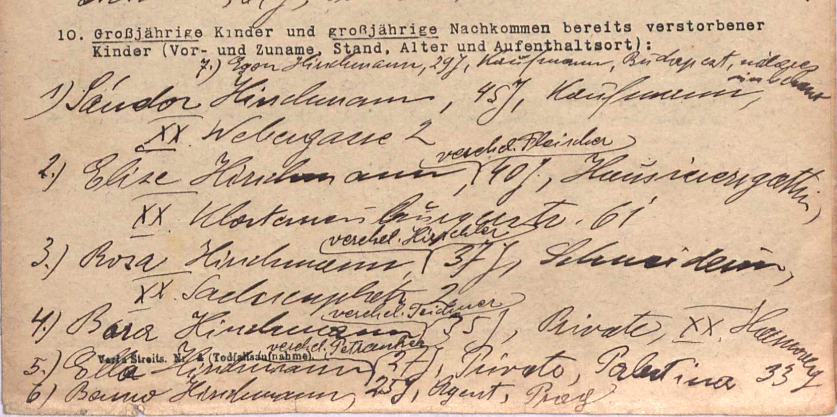Polish Notary and Land Records: Hidden Gems to Unlocking the Past
After a multi-year blogging hiatus, I'm back to talk about Polish notary and land records. While here in the US, we think of a notary as anyone with a stamp that you have to run down for a random document, in Europe, notaries carried lots more significance. In 19th century Poland, town notaries recorded all the important deeds and contractual affairs of the town. These have become incredibly important in my research from Łańcut, Poland.
Łańcut is one of those towns you never want to see as your ancestral homeland – not because there's anything wrong with the town itself, but because zero birth, marriage and death records have survived. So this post elaborates on my multi-year journey to uncover the history of my Kronfeld family of Łańcut, absent any available vital records.
My grandmother's father was born in Lviv, Ukraine - at the time Lemberg/Lwów, part of the Austrian Empire and later Poland. My grandmother knew nothing about the family history before him. Eventually, I found her father's birth record and his parents' marriage record. From the marriage record, we learn that Dawid Kronfeld was born in Łańcut, Poland in 1874, the son of Wolf Kronfeld and Rachel Schmid.
 |
| Groom entry: Dawid Kronfeld, Lemberg/Lwów Jewish marriages, 1901 |
Then, I turned to all the "usual" sources to check for vital records (birth/marriage/death) from Łańcut, only to be met with the horrible news that zero Jewish records survived from the town.
The Search for Other Kronfelds
 |
| Screenshot from the Bremen archives, showing Isaak Schmiedt f. Kronfeld of Lancut |
I tracked Isaak to eventually live in Wiesbaden, Germany with his wife. Eventually, he was deported and killed in Buchenwald concentration camp. I contacted records repositories and scoured archives throughout Germany and Holocaust databases, and I accumulated a lot of information about him. But nothing had the names of his parents.
 |
| Inheritance document, identified Helene Spinat geb. Kronfeld as next of kin of Isaak Kronfeld |
The sister, Helene Spinat née Kronfeld, died in Tel Aviv in the 1940s, and the document went on to mention her children's name. So my next project was exploring information on this family to see if I could find out more.
 |
| Excerpt from Regina Spinat's marriage record, identifying her as Keila Rücza Spinat of Lancut |
Earlier, I mentioned that I didn't know if there were one or two Wolf Kronfelds or one or two wives Rachel and Keile. This was pretty telling: one person named Keila Rücza seemed to be that it was highly likely Wolf's wife was in fact a doubled-named woman (Rachel being Rücza).
In Come the Notary Records
 |
| Notary records stored in the Przemysl archives |
Where I really lucked out was that these notaries kept name indexes in the back of the books. So I asked the Przemysl archives to check if there were Kronfeld entries in the indexes from the 1880s and 1890s, and I was in luck. After many months of waiting, eventually, I received back a response that there were several notarial files mentioning Wolf Kronfeld. After another many months of waiting, a stack of scanned Polish notarial files were sent to me by email.
 |
| Wolf Kronfeld's signature, followed by a circle notating the mark of Keile Rucze Kronfeld |
Originally, I had only asked the archives about the 1880s and 1890s, but then I needed more! I wrote back to request scans of the entire index for the earlier notary, covering the years 1861-1875, which they sent me. For anyone interested, the complete name indexes for those years can be reviewed here. And then the next round, I requested all the Kronfeld entries.
After another long period of waiting, the results were in. And I learned of another generation: the parents of Wolf Kronfeld, whose names were unknown until then: Isaac and Sarah.
 |
| Signature of Isaac Kronfeld followed by the Hebrew signature of his wife Sarah |
Thanks to these notary records, I have since been able to piece together all Kronfelds appearing in Łańcut from throughout the 19th century!
 |
| Family tree of the Kronfeld family of Łańcut, Poland |
One Other New Resource: Land Ownership Records
The Przemysl archives has recently added another collection that turned out to be helpful about the Jews of Lancut: land records. It turns out plenty of Jews owned property in the town, including my ancestor Isaac Kronfeld. These can be found in this collection Archiwum Geodezyjne, which includes records from countless towns in the region.
 |
| Cover page of the 1849 Lancut landowner list |
Protokół parcelowy gminy Lancut, 1879
* * * * *
It took over a decade of research before these new records appeared, and it was certainly worth the wait. It's just a good reminder that whenever we think the searching is done, there is always more to be found.






Comments
Post a Comment